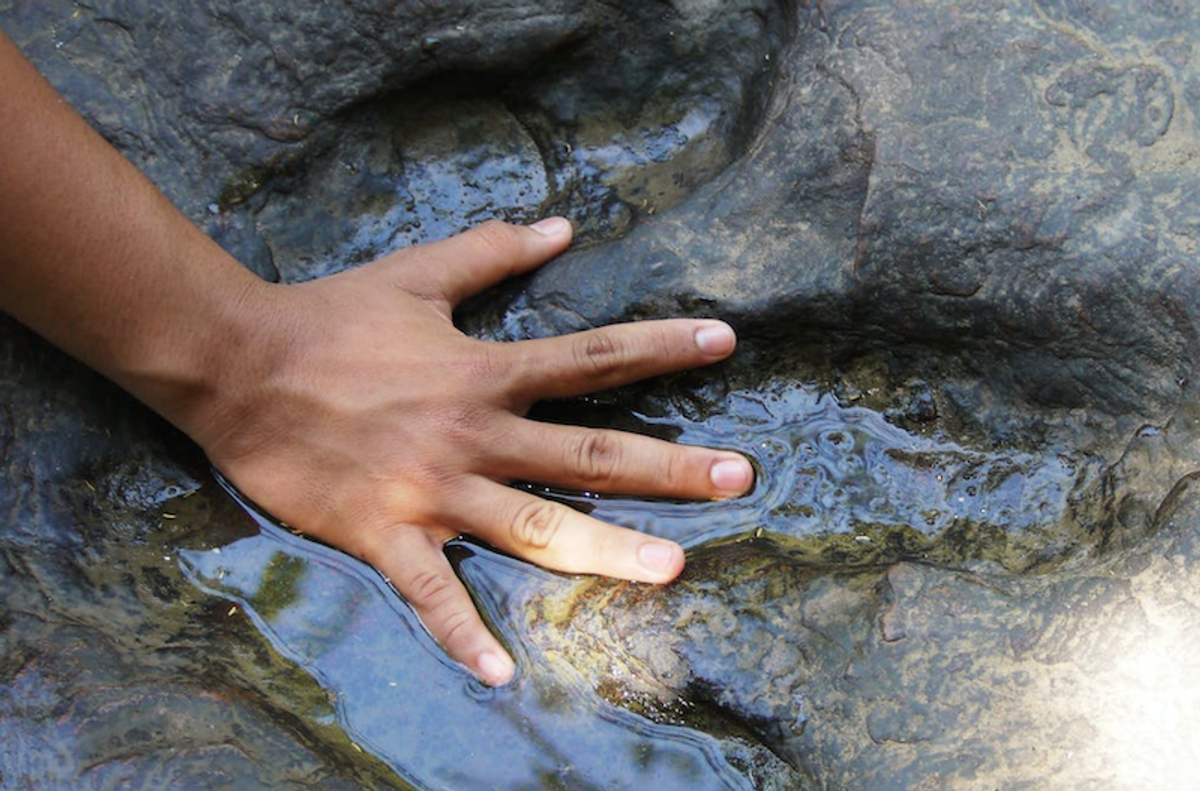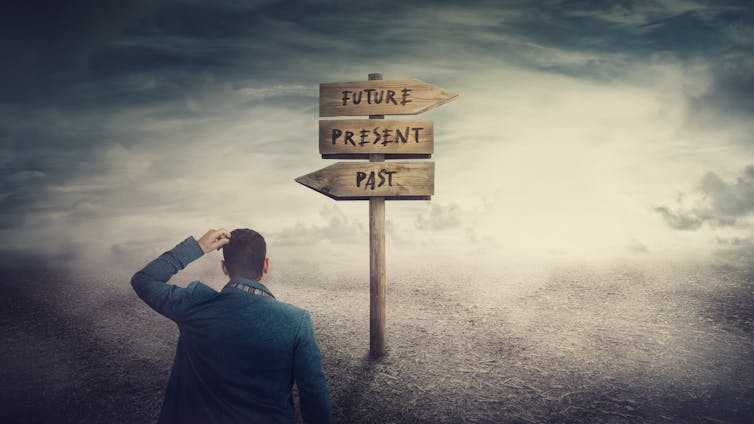2023/11/18

A recent study explored the enduring challenges individuals face after using psychedelic substances like psilocybin and LSD, finding that emotional difficulties, such as anxiety and fear, were the most common, along with self-perception and cognitive issues. The study, published in PLOS One, also identified factors that could contribute to these difficulties.
The motivation behind this study lies in the growing interest and use of psychedelic substances like psilocybin and LSD for various purposes, including therapy and personal growth. These substances have shown potential in treating conditions like depression, anxiety, and PTSD, and they are being considered for legal medical use in some countries. However, along with the potential benefits, there have been reports of individuals experiencing enduring difficulties or challenges after using psychedelics.
“We felt that there was a research gap in the field of psychedelic science, specifically looking at whether psychedelic experiences ever led to extended difficulties lasting longer than a day,” said study author Jules Evans, the director of of the Challenging Psychedelic Experiences Project. “If so, what sort of difficulties, and what helps people deal with them. These are important questions – millions of people are now trying psychedelics, encouraged by extremely positive media coverage of the last decade, and they have no awareness that sometimes psychedelics can lead to difficulties lasting beyond the trip.”
The researchers used various channels, such as social media, newsletters, email lists, and newspaper advertisements, to recruit a sample of 608 English-speaking adults who had experienced difficulties lasting more than 24 hours following a psychedelic experience.
Participants were asked to provide detailed information about their psychedelic experiences, including the type of substance used, the dosage, and the setting in which the experience occurred. They were also questioned about the duration and nature of the difficulties they encountered after the experience.
The most commonly reported substances were psilocybin (27%) and LSD (25%), followed by ayahuasca (10%), cannabis (10%), MDMA (7%), DMT (5%), ketamine (4%), mescaline (2%), and salvia divinorum (1%). Some participants also mentioned other substances like iboga, 5-MEO-DMT, PCP, Bufo toad venom, 2C-B, 2C-E, nitrous oxide, and sananga.
The most common setting was “with a friend, partner, or group of friends,” followed by “on my own,” and “in a group ceremony.” These settings were categorized as guided (with a specialist leading the experience) and unguided (without a specialist guide) for later analysis.
One of the most striking findings was the duration of difficulties reported by participants. Many individuals experienced enduring difficulties that lasted for 1–3 years or even longer. Evans said she was surprised to uncover “how long some people’s difficulties last – one sixth say their difficulties last over three years. For some people they lasted decades.”
The enduring difficulties reported by the participants were categorized into eight main themes:
1. Emotional difficulties, such as anxiety, fear, and panic, were the most prevalent, reported by 67% of participants.
2. Existential or ontological difficulties made up 42% of the reports, where existential struggle (17%) and derealization (15%) were predominant. Struggles to integrate experiences into everyday life (10%) and magical/irrational/delusional beliefs (6%) were also reported.
3. Social difficulties were reported by 27% of individuals, with communication difficulties (6%) and social anxiety/fear of ostracism (5%) being the most common issues. A sense of disconnection from others/society (13%) was another significant subtheme.
4. Self-perception difficulties were noted by 23% of individuals, with depersonalization/dissociation (16%) and a diminished or disempowered self (9%) being prominent concerns.
5. Perceptual difficulties were experienced by 21% of individuals. Visual hallucinations/visual disturbances and flashbacks/feeling of experience being repeated both stood at 7%, followed by non-specific sensory disturbance/hallucinations (3%).
6. Cognitive difficulties were reported by 18% of the individuals, with difficulty thinking clearly/confusion (9%) and intrusive/ruminative/obsessive/fixed thoughts (7%) as the leading subthemes.
7. Somatic difficulties account for 19% of the reports, with sleep problems and nightmares (9%), non-specific somatic issue (4%), and fatigue (3%) being the most frequently mentioned.
8. Behavioral difficulties made up 11% of the reports, with difficulty with performing in career/studying (6%) and substance use/abuse (2%) being the most common issues.
In addition, 5% of participants reported experiencing symptoms akin to a psychotic episode. This was classified as a distinct category because it encompassed elements from multiple main themes, rather than aligning exclusively with any single one.
“We know from other studies that psychedelic drugs can lead to functional impairment lasting longer than a day, in about 9% of cases,” Evans told PsyPost. “Our study gives us a better picture of the sorts of difficulties people can get into. Clearly psychedelics can sometimes lead to extended difficulties, most typically of the sort described above. We now need to research what may cause these extended difficulties and what helps people cope with them.”
Participants were also asked about their perceptions of the relationship between their difficulties and prior mental illness or childhood trauma. A significant number (28.5%) had been diagnosed with a mental illness before their psychedelic experience, and nearly half of them believed this diagnosis could be linked to the difficulties they faced afterward. Moreover, 40% of participants suspected that childhood trauma might have played a role in the difficulties arising from their psychedelic experiences.
Nearly 19% of the participants reported being diagnosed with a mental illness after the psychedelic experience, and more than half of those with a post-experience diagnosis believed that their psychedelic experience contributed to this diagnosis.
Despite the enduring difficulties, a majority of participants (54.9%) reported still taking psychedelic drugs, and nearly 90% agreed that the insights and healing gained from psychedelics, when taken in a supportive setting, are worth the risks involved.
The researchers also tested several hypotheses to identify factors that predict the range and duration of difficulties. They found that experiencing a more challenging trip and being in an unguided setting at the time of the psychedelic experience were associated with a greater range of difficulties. The challengingness of the trip was also linked to the duration of difficulties. However, other factors like prior mental illness diagnoses did not significantly predict the duration or variety of enduring difficulties.
While this study provides crucial insights into the challenges some individuals face after psychedelic use, it is not without limitations. The predominantly Western, English-speaking sample may not represent the experiences of individuals from different cultural backgrounds or subcultures where psychedelics are used for religious or therapeutic purposes.
Additionally, the study relied on self-reported data, which may be influenced by memory and personal interpretations. It did not explore the duration, significance, or impact of each difficulty type, which could provide further insights into which difficulties cause the most distress.
“Our study only focused on people who said they’d experienced difficulties lasting longer than a day,” Evans said. “We need to see how common these difficulties are as a percentage of total psychedelic experiences. We also need to learn more about what might make extended difficulties more likely, and what specific treatments or interventions shorten the intensity or duration of people’s suffering.”
The study, “Extended difficulties following the use of psychedelic drugs: A mixed methods study“, was authored by Jules Evans, Oliver C. Robinson, Eirini Ketzitzidou Argyri, Shayam Suseelan, Ashleigh Murphy-Beiner, Rosalind McAlpine, David Luke, Katrina Michelle, and Ed Prideaux.
© PsyPost
8. Behavioral difficulties made up 11% of the reports, with difficulty with performing in career/studying (6%) and substance use/abuse (2%) being the most common issues.
In addition, 5% of participants reported experiencing symptoms akin to a psychotic episode. This was classified as a distinct category because it encompassed elements from multiple main themes, rather than aligning exclusively with any single one.
“We know from other studies that psychedelic drugs can lead to functional impairment lasting longer than a day, in about 9% of cases,” Evans told PsyPost. “Our study gives us a better picture of the sorts of difficulties people can get into. Clearly psychedelics can sometimes lead to extended difficulties, most typically of the sort described above. We now need to research what may cause these extended difficulties and what helps people cope with them.”
Participants were also asked about their perceptions of the relationship between their difficulties and prior mental illness or childhood trauma. A significant number (28.5%) had been diagnosed with a mental illness before their psychedelic experience, and nearly half of them believed this diagnosis could be linked to the difficulties they faced afterward. Moreover, 40% of participants suspected that childhood trauma might have played a role in the difficulties arising from their psychedelic experiences.
Nearly 19% of the participants reported being diagnosed with a mental illness after the psychedelic experience, and more than half of those with a post-experience diagnosis believed that their psychedelic experience contributed to this diagnosis.
Despite the enduring difficulties, a majority of participants (54.9%) reported still taking psychedelic drugs, and nearly 90% agreed that the insights and healing gained from psychedelics, when taken in a supportive setting, are worth the risks involved.
The researchers also tested several hypotheses to identify factors that predict the range and duration of difficulties. They found that experiencing a more challenging trip and being in an unguided setting at the time of the psychedelic experience were associated with a greater range of difficulties. The challengingness of the trip was also linked to the duration of difficulties. However, other factors like prior mental illness diagnoses did not significantly predict the duration or variety of enduring difficulties.
While this study provides crucial insights into the challenges some individuals face after psychedelic use, it is not without limitations. The predominantly Western, English-speaking sample may not represent the experiences of individuals from different cultural backgrounds or subcultures where psychedelics are used for religious or therapeutic purposes.
Additionally, the study relied on self-reported data, which may be influenced by memory and personal interpretations. It did not explore the duration, significance, or impact of each difficulty type, which could provide further insights into which difficulties cause the most distress.
“Our study only focused on people who said they’d experienced difficulties lasting longer than a day,” Evans said. “We need to see how common these difficulties are as a percentage of total psychedelic experiences. We also need to learn more about what might make extended difficulties more likely, and what specific treatments or interventions shorten the intensity or duration of people’s suffering.”
The study, “Extended difficulties following the use of psychedelic drugs: A mixed methods study“, was authored by Jules Evans, Oliver C. Robinson, Eirini Ketzitzidou Argyri, Shayam Suseelan, Ashleigh Murphy-Beiner, Rosalind McAlpine, David Luke, Katrina Michelle, and Ed Prideaux.
© PsyPost


















